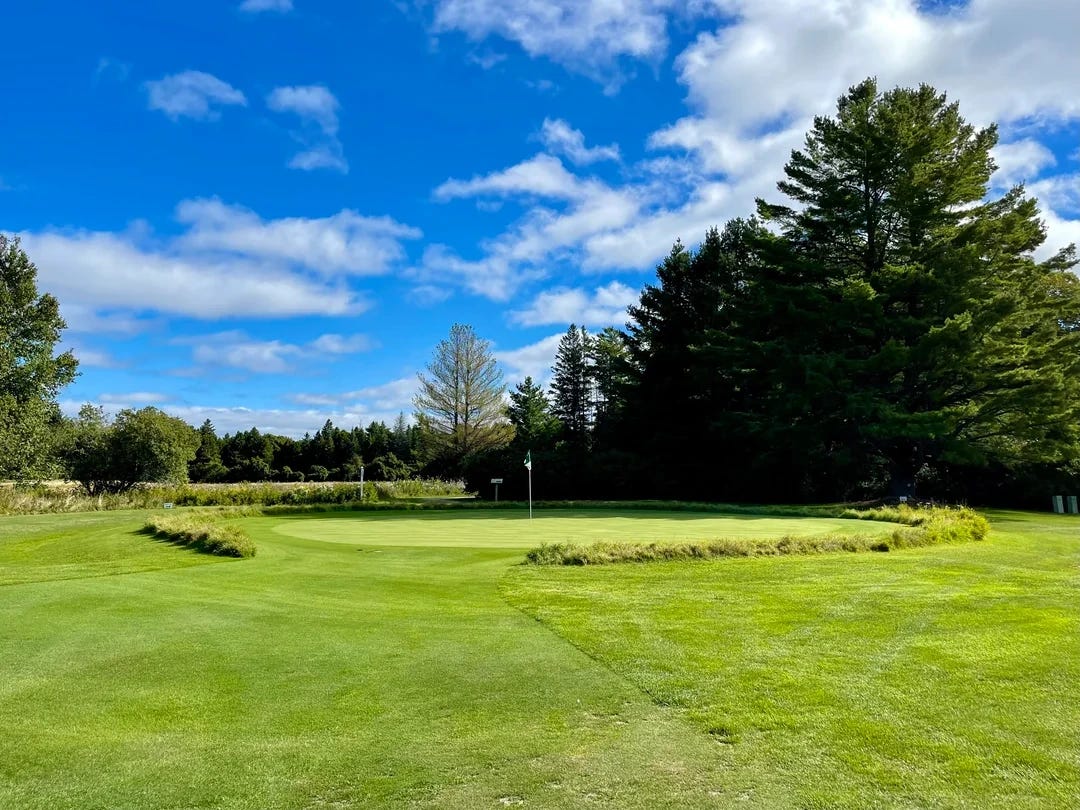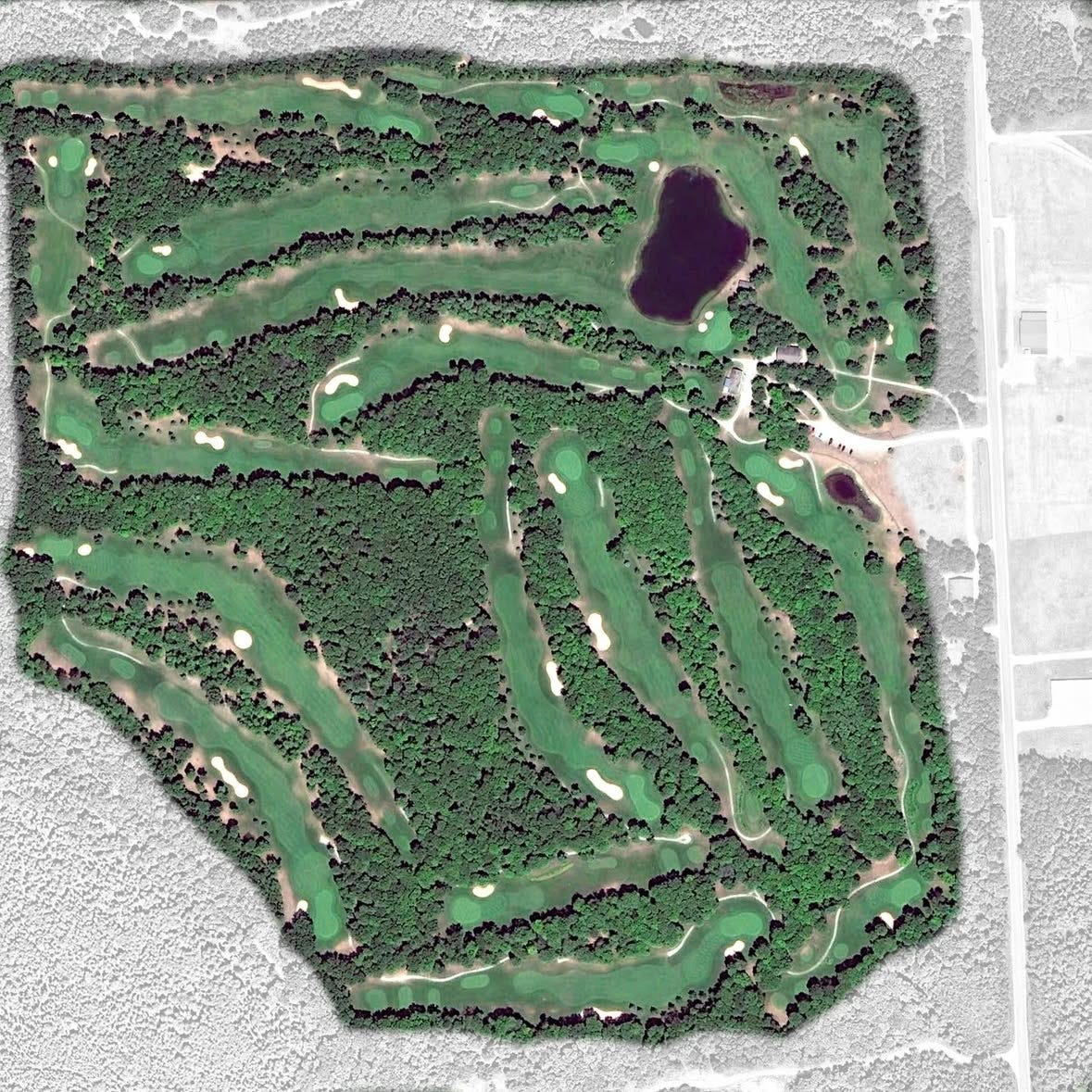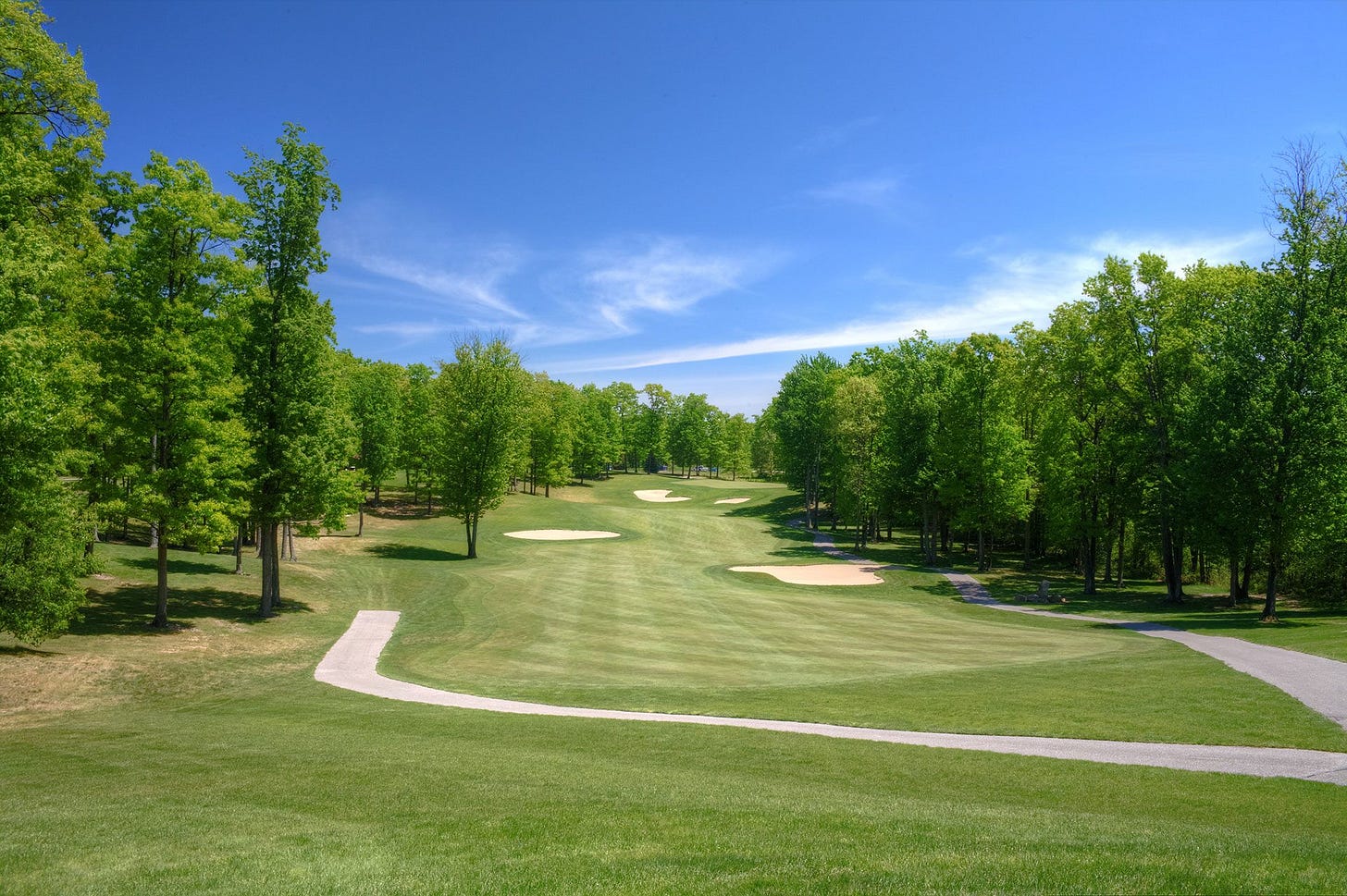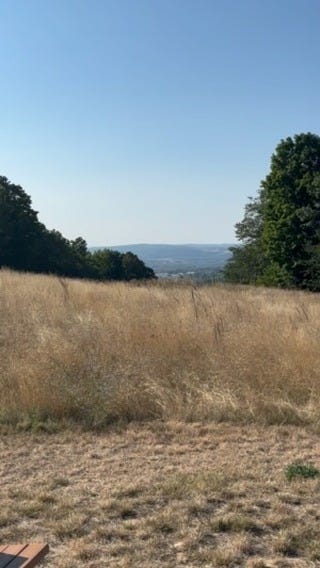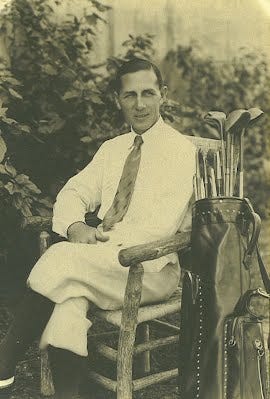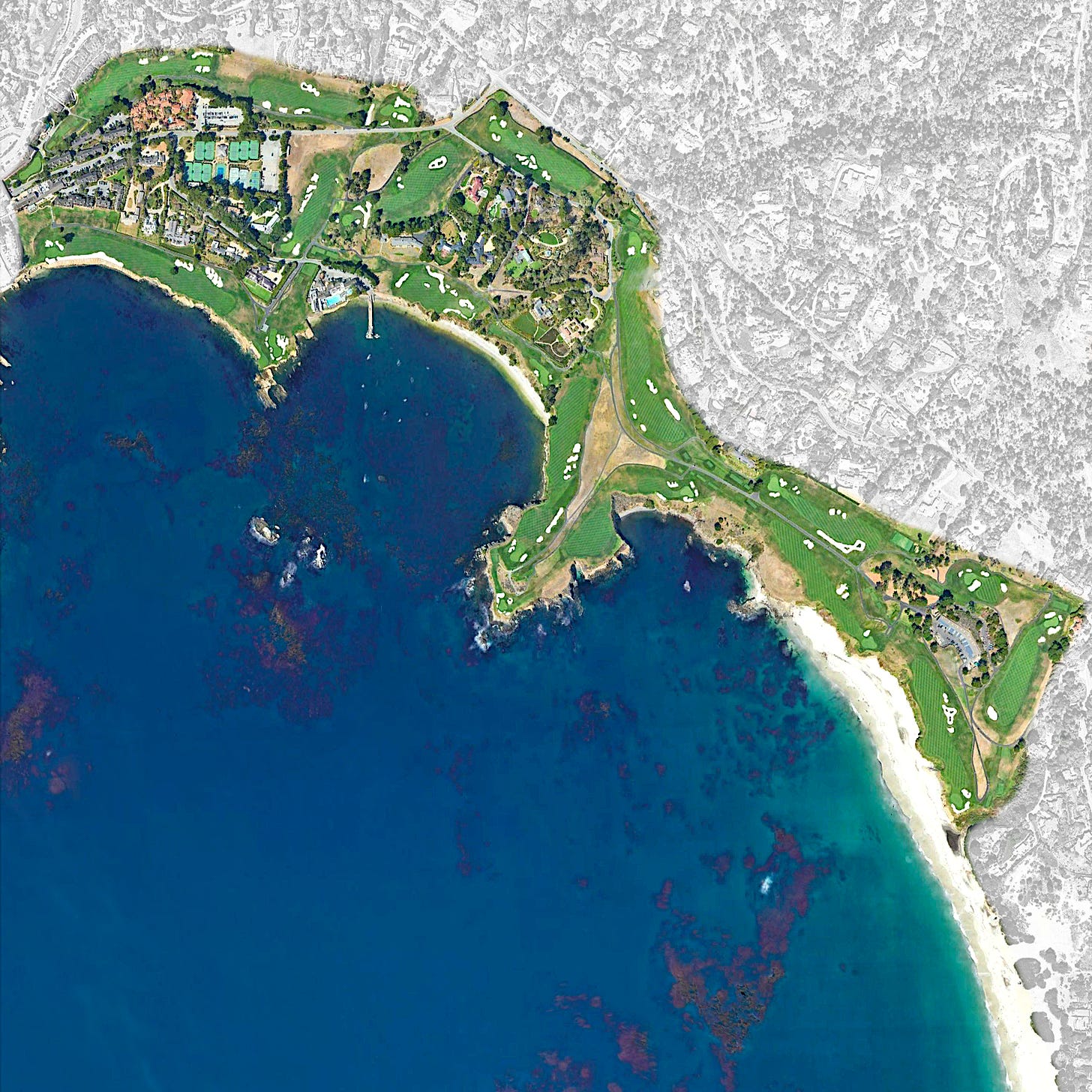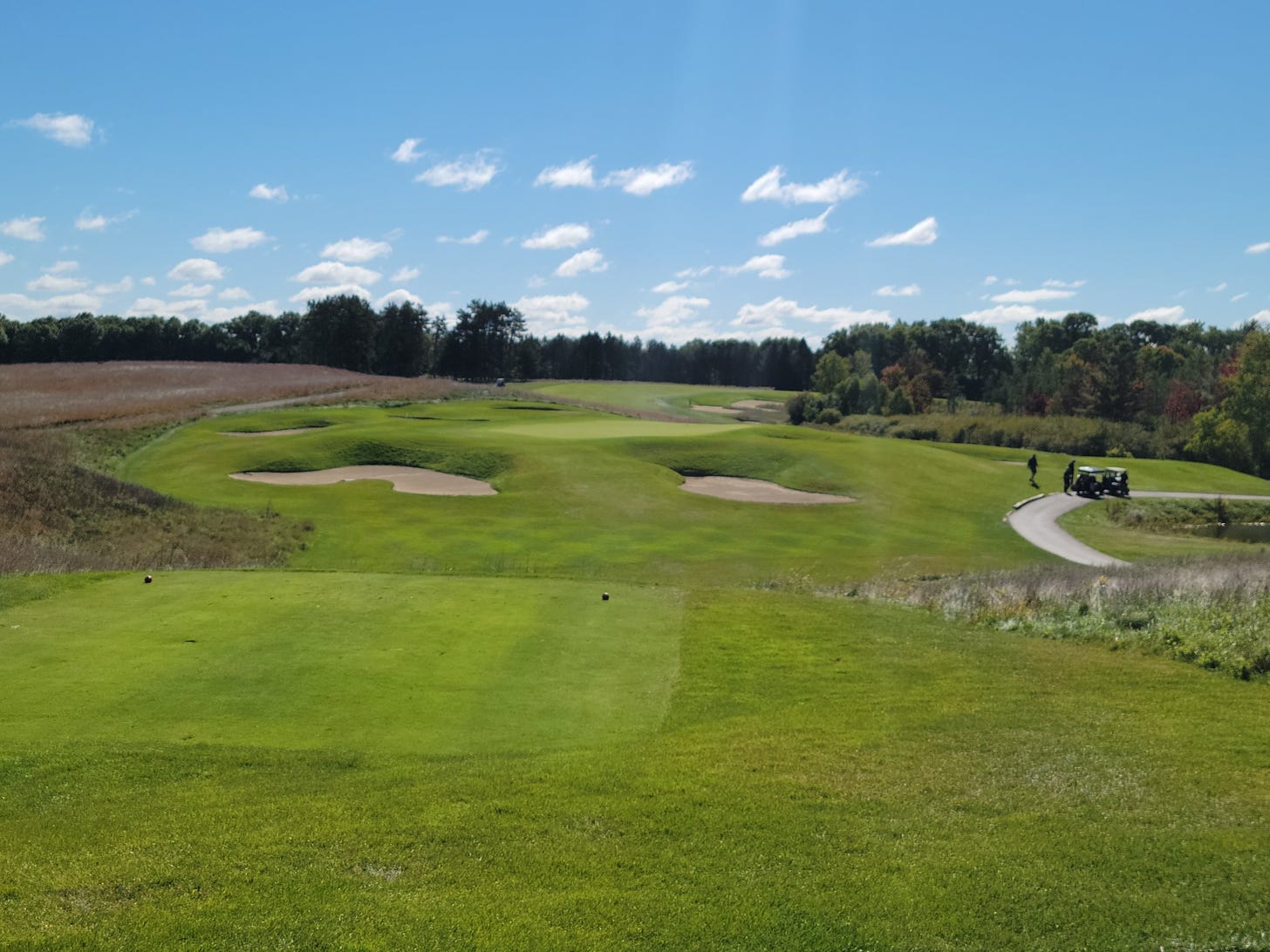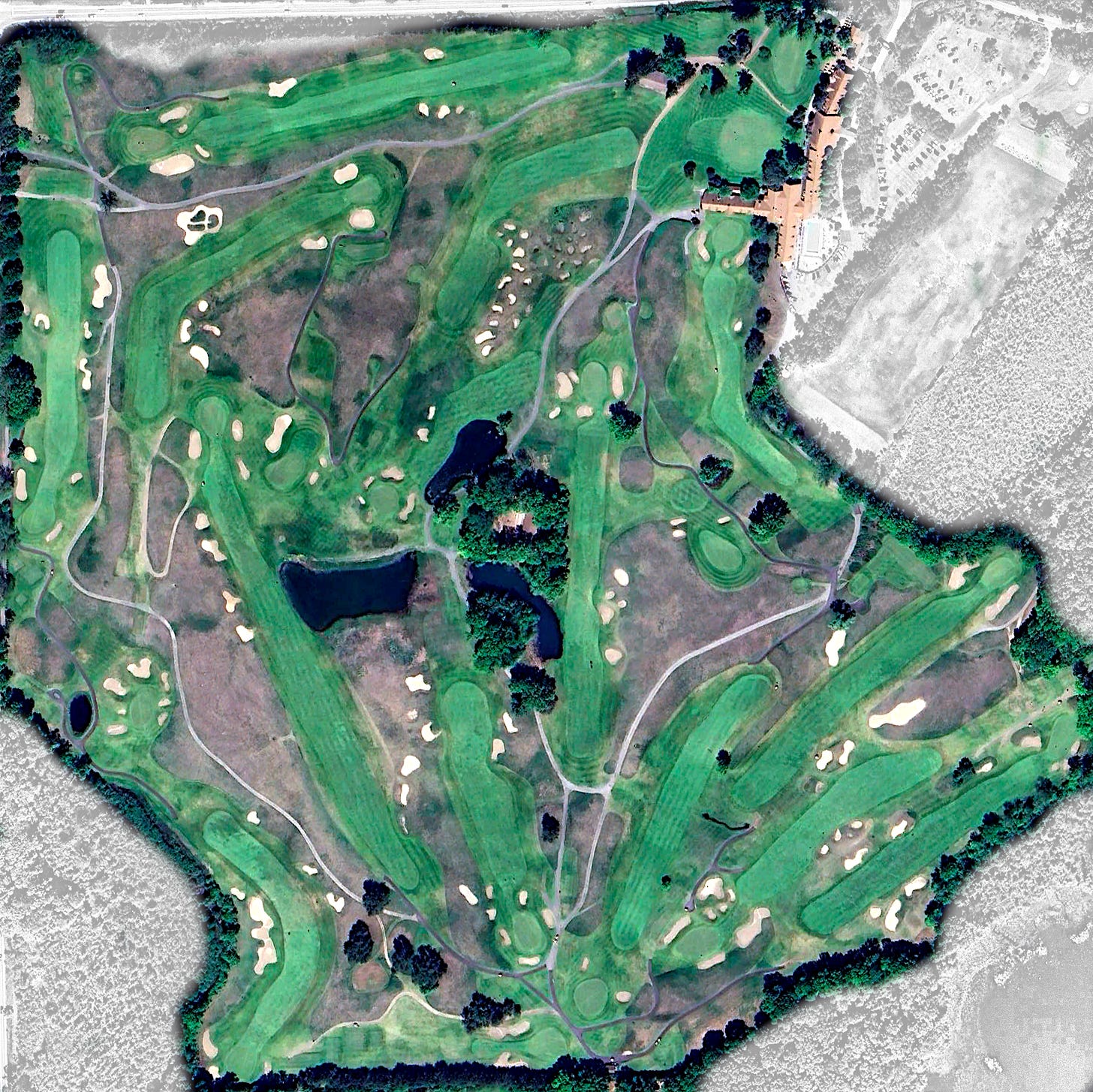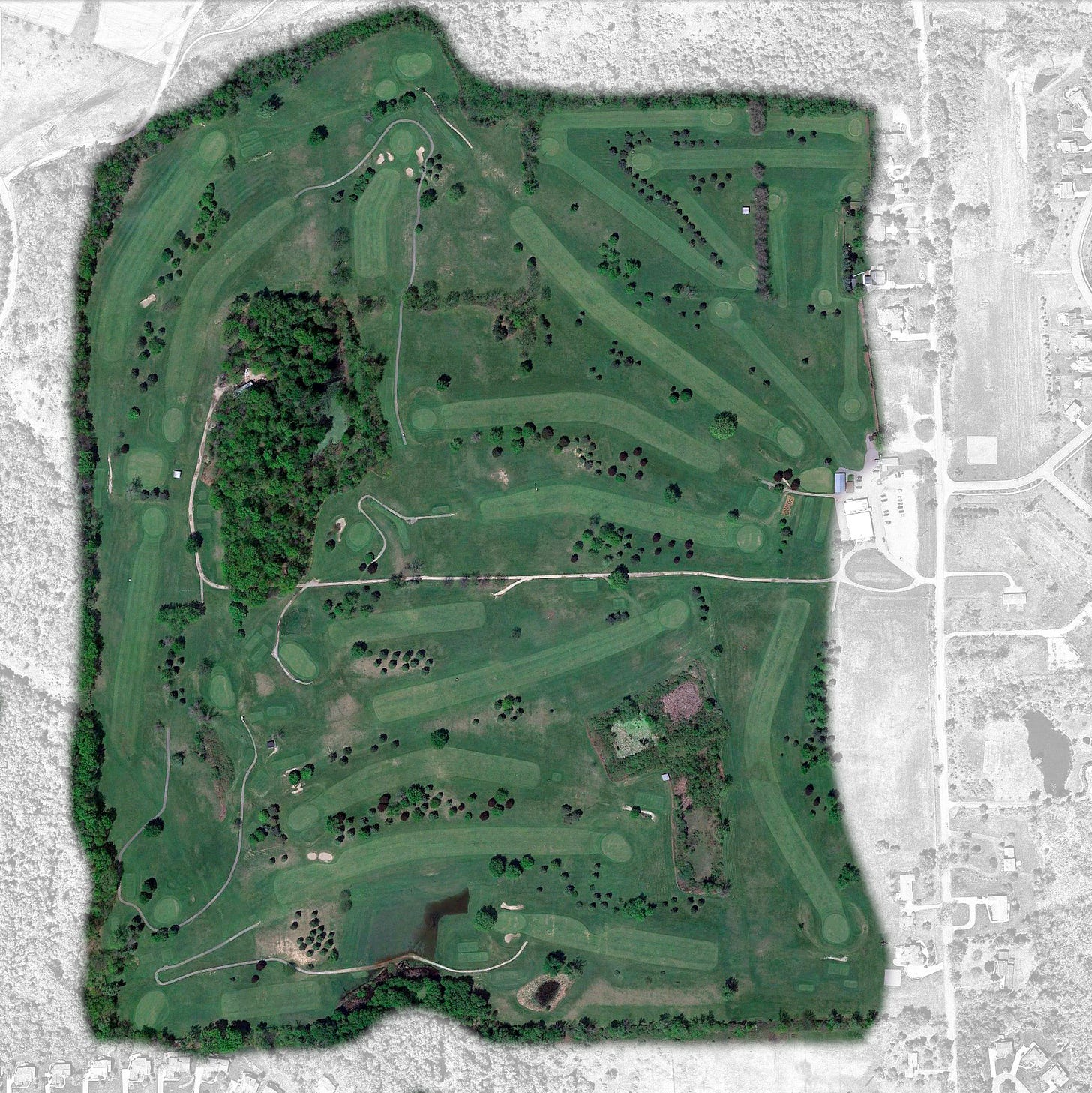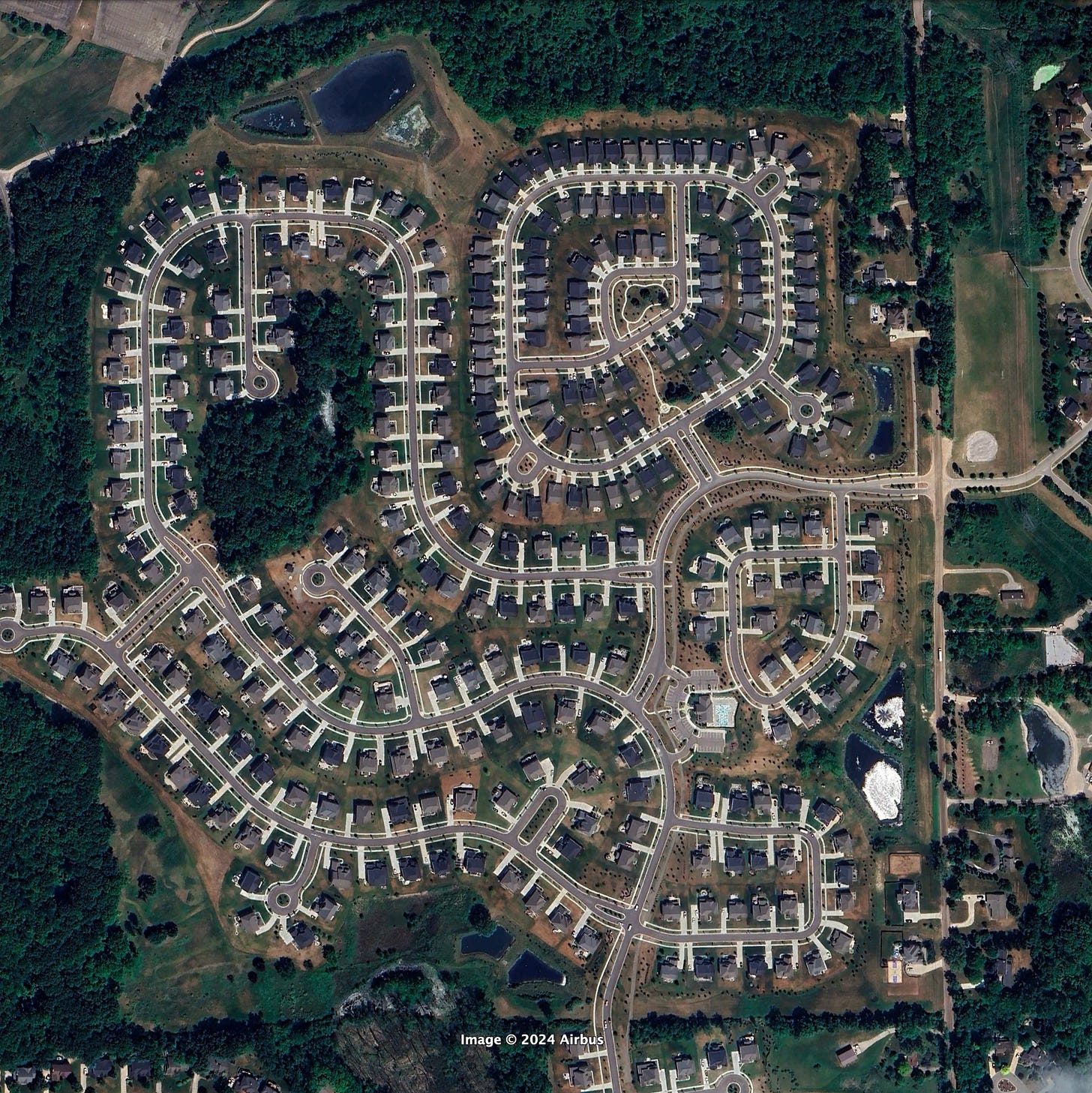Faces in the Crowd
I read the Jeff Pearlman book recently on Bo Jackson, and was reminded of the old Sports Illustrated feature, Faces in the Crowd (it featured Vincent “Bo” Jackson back in 1981). It was a good impetus to find more info on some of the names that pop up from time to time in my weekly features. I don’t have a cool cover to go with it, but here is this week’s version.
Your Support Here
Before I get to the Faces in the Crowd, just a quick note that I’m still exploring how to commit as much time as possible to Great Lakes Loops. A number of folks have already very generously pledged their support with paid subscriptions, which is incredible. I don’t know how much, if any, interest there is at the moment, but I would also like to explore using this space to feature products and companies that, frankly, I think are cool. The benefits of having your brand featured here:
You can directly reach passionate Michigan golfers or golfers who travel to Michigan, and;
It will never be cheaper than it is right now!
If you have any interest at all, or know someone who might be interested, send me a message on Substack or e-mail me if you are interested. I think this could be a fun, creative space for any brand to explore.
In other news, Great Lakes Loops hats from Imperial, and gloves from North Coast Golf Co. are currently in production. Once I have them in hand I will get to work on a store page, and get your feedback for the next round of merchandise.
Karen O’Dell
Since 2010, Karen O’Dell has been the only female head superintendent in Michigan. Wawashkamo GC on Mackinac Island has been her home for the past fifteens years - literally, she lives on the property during the summer golf season (she winters in Gaylord) - where she heads a grounds crew of two people, including herself. Or the “maintenance two”, she jokes, playing off the traditional maintenance crew at most golf courses.
Despite Wawashkamo having what I consider to be a rising profile over the last few years, being the head superintendent there has not traditionally been a high publicity job. It simply isn’t a high-traffic course due to the nature of the island. So most of the info I was able to find on Karen O’Dell is from coverage focused on her status as the only female head superintendent in the state. There is a good profile recently done by GAM and featured in their Michigan Links magazine. Another profile from 2021 in the Michigan Golf Journal (how there are two publications both with this name continues to confuse me) has some good quotes from Karen. And slightly older is a 2012 profile on female superintendents from Michigan State University’s Golf Course Industry.
Her achievements as the only female super in the state are notable, but, more than anything else, I’m fascinated by the uniqueness of the job of being the super at Wawashkamo.
“Most people think it’s pretty cool when I tell them I’m a golf course superintendent,” O’Dell says. “I get comments about how lucky I am to work on a golf course every day and get to enjoy Mother Nature. I have to agree with them.”
Due to the nature of Mackniac Island not having cars, the maintenance routine doesn’t share much in common with a typical course. With her one assistant, for example, they mow the greens by hand daily, a three mile walk. And their supplies? “Horse-drawn flatbeds, or ‘drays’ drive around Mackinac on prescribed routes, and we’re often at the tail end of the crammed summer delivery schedule, which means I’m getting out of bed at 9pm to unload supplies!”
That’s how it works at Augusta, too, right?
“We don’t want the fairways to look like Augusta.”
That is the longtime pro at the club, Chuck Olson. The fairways, in fact, are not irrigated, so there will never be a chance of them resembling the perfect green surfaces in Georgia “We’re not trying to be that. We’re really trying to be Carnoustie. We want it to be hard and bumpy and lumpy and not perfect grass everywhere.”
“Having such a small staff (we joke and say we are the “maintenance two” – not the maintenance crew – just me and my assistant Ron Morden), we love the club and the history behind it,” says O’Dell. “The members treat us very well and appreciate our efforts. We even play in the Wednesday mixed couples, which gives me a chance to talk with the membership about the course and mention things they need to be doing to help out.”
Help is certainly a thing that O’Dell could use. Lacking a typical maintenance crew, she must be an expert in all things related to the upkeep of the course, both agronimically and mechanically.
“In my position, we’re only a two-person crew, so we do everything. I’m my own mechanic, I spray my own greens, do the fertilizing, we split mowing cycles. I’m pooped at the end of the day. My knees hurt, my elbows hurt, my wrists hurt.”
“The farm is where I learned to work hard, and so this just kind of came easy to me. I’m not ready to retire, but my body is. I am sitting here now with icepacks on my knees. It’s hard work, and your body takes a beating.”
Jeff Gorney
A common result of profiling so many courses each year doing the Michigan Golf Course Aerial of the Day features is that some designers start to reappear in the feed. Some names are a given, such as Matthews, Hills and Newcomb, yet others are not household names. A name can only pop up so many times before I conclude that I need to do some research on the face behind the design. One such name is Jeff Gorney.
The problem is that finding much info on the man himself has proven to be difficult.
Golfpass lists 18 Michigan courses to Gorney’s name. That’s a decent start, although blindly trusting Golfpass has proven in the past to be a mistake. I can attest that I have featured 11 Gorney designs since 2023:
Bear on the Mountain (fka Hessel Ridge) - Hessel
The Dream - West Branch
Hills Heart of the Lakes (first 9) - Brooklyn
Heathlands (NLE) - Onekama
Little Traverse Bay (NLE) - Harbor Springs
The Patriot (fka Fox Run) - Grayling
Pine View Highlands - Houghton Lake
Snow Snake - Harrison
Willow Wood (Portland)
Grayling (9 hole addition)
Clear Lake (9 hole addition) - Big Rapids
The closest thing I could find to a bio for Gorney comes from the website for Clear Lake GC:
“Comstock, Michigan resident and veteran designer, Jeff Gorney has a solid reputation for designing several beautiful Michigan golf courses, Gorney opened his design business in 1988 after more than 15 years working on the maintenance side of the industry. His first project was a nine-hole addition to what is now Clear Lake Golf Club.”
And that’s it. The man appears to be elusive, with most (all?) of his work occurring between 1988 and about 1999. His most notable work is likely The Dream, and it’s unclear if he had a hand in helping owners Tom and Dan Courtemanche with their highly-rated companion course, The Nightmare, in 2003. His other recognizable work is his involvement with Hills’ Heart of the Lakes, a collaboration with former PGA Tour player Mike Hill.
And sadly, let’s not forget what was certainly his best property, Little Traverse Bay. I toured the former site of the course, now a wildlife preserve, last summer. While the design of the course was met with mixed reviews, there was no denying that it was one of the most unforgettable locations for golf in the state.
I’ll put a pin in the Jeff Gorney profile, and if anyone has any good info on the man and his work, let me know and I’ll revisit this topic in the future.
Wilfrid Reid - Michigan Golf O.G.
Talking about Jeff Gorney has rekindled my thoughts on a tier-ranking of the most impactful architects in Michigan golf history. This factors in both quantity and quality, and was something I explored while profiling Wilfrid Reid. There are a lot of new subscribers here since I did that profile, so it feels worthy of a revisit.
I first learned Reid’s name upon attending the US Senior Open at Indianwood in 2012. I knew nothing about Indianwood before attending, and I came away wildly impressed with the property. With the 2012 US Open taking place that year at the Olympic Club, another course that Reid’s name is associated with, I figured it was settled… this guy was a big deal.
And yet Wilfrid Reid is a name that isn’t often included in the list of influential course designers in Michigan, let alone the US. Maybe he wasn’t a big deal?
I hadn’t intended to do a deep dive on Wilfrid Reid, but then I found this biography of Reid, and I think the word biography should be used very loosely here. It’s more like a white board of notes and oft-repeating ideas by architect Bill Zmistowski (building architect, not golf). Zmistowski completed a renovation of the clubhouse at Indianwood after the 1981 purchase of the club by Stan Aldridge, and coincidentally is Wilfrid Reid’s grandson. The notes are a handful to take in, but there is some interesting stuff in there on someone who, now without a doubt in my mind, is an O.G. of Michigan golf.
Perhaps the achievement that Reid is mostly widely known for is his involvement at the Olympic Club, which, if we are being honest, is a bit of an oversell. He designed the original course at Lakeside Country Club in 1917 with Walter Fovargue. The Olympic Club later purchased the course, with it becoming the Lake Course at Olympic Club. A full remodel of the course by W. Herbert Fowler was soon undertaken, followed by additional work later completed by Willie Watson and Sam Whiting. It’s unclear how much of Reid’s original work, if any, is seen in today’s Lake Course.
But if the Olympic Club is an oversell for Reid, his involvement in one of America’s most iconic courses is often undersold. Wilfrid, along with James Donaldson, created the original routing for Pebble Beach. They created six routings, actually. From there, James Neville and Douglas Grant selected their preferred routing of the six, and completed the construction of the course.
I don’t think it would be out of line to suggest that Reid and Donaldson’s routing set a precedent that many oceanside courses in the United States follow today, including the original course at Bandon Dunes. Rather than using up all of the available coastline acreage in one continuous stretch, Pebble Beach makes its way to the coastline early in the round, heads inland for a stretch, and then returns for the closing holes, offering multiple experiences near the water throughout the round.
Olympic Club and Pebble Beach are undoubtedly the two highest-profile courses in Reid’s resume, with both coming quite early in his career. But both his golf design and golf playing careers featured similarly impressive starts.
Born in England in 1884, Reid apprenticed in Scotland under Willie Park, Jr. in 1901 as a teenager. After establishing his design and playing careers in Europe1, he joined Harry Vardon and Ted Ray on a voyage to Boston, where they would compete in the 1913 US Open at The Country Club in Brookline. As part of the “British Invasion”, per the Boston Globe, Vardon and Reid both shot a 75 in the first round, and then held the lead together after 36 holes with a score of 147 (that’s a 75-72… you’re welcome).
In the third round, Reid was paired with Francis Ouimet, who is most known for going on to win the event, a story captured in the book and film The Greatest Game Ever Played. Things didn’t go so well in the fourth round for Wilfrid, per this note from Zmistowski:
Then in the fourth round he faltered as a result of injuries sustained in an infamous altercation the night before arguing with Ted Ray in their hotel dining room at the Copley Plaza and finished tied for 16th.
I had to know more about this, and luckily I found it while researching the connection between Wilfrid and modern LPGA star Mel Reid (they are distant relatives). Near the end of his career prior to retirement, Wilfrid penned a letter that recounted that incident with Ted Ray at the 1913 US Open (note the mention of Alex Smith, who designed Waswashkamo on Mackinac Island):
It’s funny how some things remain in your mind, while more important ones are sometimes forgotten. I recall looking for Ray at the 1913 Open and found him in the bar of the hotel with Alex Smith. They were having a big argument about socialism. Then I had to open my big mouth. I said, “Ted, how the hell can you argue in favor of socialism when you make as much money as you do?”
Well, Ted really got angry at that, really upset, and he punched me right in the face and knocked me clear over the table. My face was swollen clear out to the ear, and the next day I had a devil of a headache. Vardon was very upset and said he was going to withdraw, but I talked him out of it.
Recovering nicely from that encounter, Reid officially emigrated to the US in 1915 at the age of 30. He would play in several more major tournaments throughout his career, with his best finish coming in the 1916 US Open with a T4. Once arriving on American soil for good, he quickly settled into a life as a teaching pro and golf architect, making several stops on the east coast before finally establishing himself in Michigan in 1922.
Wilfrid accepted the role of head professional at the Country Club of Detroit that year, marking the beginning of a decade span that saw him become a major figure in Michigan golf. While in Detroit, he voted to establish the Michigan Section of the PGA, later serving as President from 1928-1930. Along with Walter Hagan, Reid became one of Michigan’s prominent golf professionals, winning the Michigan PGA Championship in 1926.
The golf boom of the 1920’s coincided with the peak of Reid’s golf design career, a fortuitous occasion for Michigan golf, as he would go on to design or renovate over 20 course in the state. Not to be overlooked for his role, Reid’s longtime design partner in the state was William Connellan of Grosse Ile. Connellan was a turf farm owner and golf course contractor, previously working as a course superintendent in New York and as a construction superintendent for Donald Ross.
Between Reid and Connellan, you might say they were one of the first design-build firms in the state:
The partnership provided complete design and construction services with their experienced construction crews, extensive grading equipment, teams of horses, turf farm, trucks and trailers, drainage and irrigation system expertise, project management and technical skills required for building a golf course. Reid was the active, on-site designer and strategist working directly with the crews. He did not draw plan drawings which were sent out to surveyors, engineers or draftsman after he had done the on-site routing, staking-out all the holes, tees, turn-points, bunkers, hazards and green sites. However, he was well known for his artistic talent drawing freehand sketches. This was his method of effectively communicating with the crew doing the grading, earthmoving and shaping of his envisioned design features, shaping, hazards, concepts and strategy.
After serving as the pro at CC of Detroit until 1924, Reid and Connellan both transitioned their focus to the development of the Indianwood Club in Lake Orion, which would become their lasting legacy in the state. The property at Indianwood was the family farm of Frank W. Blair, the President of Union Trust at that time, and the man responsible for the creation of what would go on to become the Guardian Building in Detroit. Wilfrid Reid would serve as a co-founder of the club along with Blair, living in a large house across the street from the club entrance as he constructed the course and later served as the head professional until 1932.
Walter Hagen, Tommy Armour and Horton Smith would become regular visitors to the club at Indianwood in the 1930's, while Ed Furgol, the 1954 U. S. Open Champion, developed and refined his game there. Under Reid’s direction, Indianwood would host the 1930 Western Open, won by Gene Sarazen. The Western was considered a major championship in those days, and the third most prestigious world event behind the US Open and the Open Championship. After the Western, Indianwood would go on to host three more major championships, including the 1989 and 1994 US Women’s Opens, and the 2012 US Senior Open.
"The spotlight of the golf world turned to the little village of Lake Orion in 1930 when the Western Golf Association brought the third largest major tournament in the world to Indianwood".
In addition to their work at Indianwood, Reid and Connellan had their hands in the early design or remodeling of numerous prominent clubs in the Detroit area, including Birmingham CC, Plum Hollow, Tam O’Shanter, Orchard Lake CC, and Meadowbrook. And while it was their most successful original design, Indianwood still became a victim of the stock market crash and Depression in the early 1930’s. The club was taken over by the Union Guardian Bank of Detroit after failing, and Reid lost his new home while watching his golf course design career come to an abrupt halt.
Indianwood eventually survived in part to Carl Ruebelman, a local Lake Orion businessman, who purchased the club in the 1940’s and brought it back to prosperity after renovating the clubhouse and making it a year-round country club. The club was sold again in 1981 to Stan Aldridge, whose family still owns the course today. He initiated a further restoration of the clubhouse (bringing Zmistowski into the story) as well as a restoration of the golf course. Aldridge’s revitalization of the course helped secure the 1989 US Women’s Open, and place Indianwood back in the spotlight.
The decline of Indianwood in the 1930’s was not the end of Wilfrid Reid’s story, however. Upon losing their home, Wilfrid relocated his family to Chicago, where he took a job as a teaching pro at Beverly Country Club while also working on remodeling the course. To make ends meet, according to Zmistowski, Wilfrid also taught golf at the downtown Marshall Fields department store2. In 1934, he would further cement his soft landing by moving his family to Colorado to accept the head pro position at The Broadmoor, while serving as the pro at Seminole Golf Club in Florida during the winter months.
As a final chapter in Michigan, Reid returned to Gaylord Country Club in 1949, a club that he originally designed in the 20’s, where he served as the teaching pro until retiring to Florida in 1954. He was inducted into the Michigan PGA Hall of Fame in 2015.
As a parting word, one of the best things about a Wilfrid Reid biography compiled by his grandson is that it includes tidbits that a typical biographer may be reluctant to include - claims that can’t possibly be proved or disproved, such as:
He estimated that he had given lessons for over 300,000 hours. Belgium's King Leopold II (at La Boulie), President Warren G. Harding (at Seaview), Winston Churchill and England's King Edward VIIl (at Bansted Downs), Joyce Wethered, the Duke of Windsor, Dick Chapman, Michigan LPGA standout and granddaughter Pat Devany, Ohio Governor Cox (at La Gorce), Harvey Ward (in San Francisco), Rhonda Glenn (at Palm Beach Par 3) were among his thousands of pupils. At La Boulie in Paris he also gave lessons to the mysterious Mr. Chesterfield (the assumed name of England's King Edward VII), many diplomats and possibly Baron Eduoard de Rothschild as well.
These are the most credible design credits in Michigan for Wilfrid Reid and William Connellan (in my opinion) that were included in Zmistowski’s biography:
Meadowbrook - Northville (1923 - added 9 or redesigned - 1916 Willie Park 1st 6 holes)
Brae Burn - Plymouth (1923)
Plymouth CC (now Fox Classic - 1923)
Indian River (originally Burt Lake - 1924 redesign)
Gaylord Country Club (original - 1924 & 1927)
Indianwood - Lake Orion (1925)
Plum Hollow - Southfield (1925 - completed 1921 Colt & Alison layout)
Huron Shores - Port Sanilac (1925)
Tam O'Shanter - Orchard Lake (1926 and 29 renovated - 1925 C.H. Alison)
Black River CC - Port Huron (1926 added 9)
Birmingham CC (1928 - added 9 and renovated 9 - 1916 Tom Bendelow original 9)
Orchard Lake (1928 - completed or redesigned - 1926 Colt & Alison)
Twin Beach - West Bloomfield Township (1929)
Bald Mountain - Orion Township (1929 - Closed 2015)
Flushing Valley (1930)
Considering all of the different courses that Wilfrid Reid worked on in Michigan and the outsized impact he had in the 1920’s, it made me think about who I believe are the most impactful golf architects in the state. Not necessarily who the best are, but who has had the most influence on what we have seen in the state throughout history that is still resonating today, for better or worse.
For some, it will simply be a matter of quantity. For others, they maybe didn’t produce a lot of courses in the state, but they are heavy hitters. I didn’t really plan on doing this, and this is my first attempt at the thought experiment, so it’s probably inconsistent. There is a delicate balance between weighting quantity versus quality that I’ll need to work out, but it’s a start.
Tier 1- Wilfrid Reid, Donald Ross, Tom Bendelow, Willie Park Jr, Harry Colt, Charles Alison, Jerry Matthews, Arthur Hills, Mike DeVries
Tier 2 - Willie Watson, Ray Hearn, William Newcomb, Rick Smith, Tom Doak, Bruce Hepner, Alister Mackenzie, Perry Maxwell, Jack Nicklaus
Tier 3 - Bruce Matthews III, Robert Trent Jones, Sr., Larry Packard, Rees Jones, William Langford, Theodore Moreau, Arnold Palmer, Ernest Way, Tom Weiskopf, Warren Henderson, Chris Wilczynski, Jim Engh
Tier 4 - Don Childs, Mike Husby, Dana Fry, Dr. Michael Hurzdan, Andy Staples, Craig Schreiner, Tom and Dan Courtemanche, Warner Bowen, Drew Rogers, Gil Hanse, Robert Trent Jones, Jr., Keith Foster, Harry Bowers, Lee Stone & Jim Cole, John Sanford, Jeff Gorney, Erik Iverson, Don Placek, Brian Schneider, Brian Slawnik, Paul Albanese, Chris Lutzke, Lorrie Viola, Tom Fazio, Pete Dye
Poised to move up or into rankings with new work: Ray Hearn, Bruce Matthews III, Chris Wilczynski, Drew Rogers, Gil Hanse, Paul Albanese, Chris Lutzke, Andrew Green






